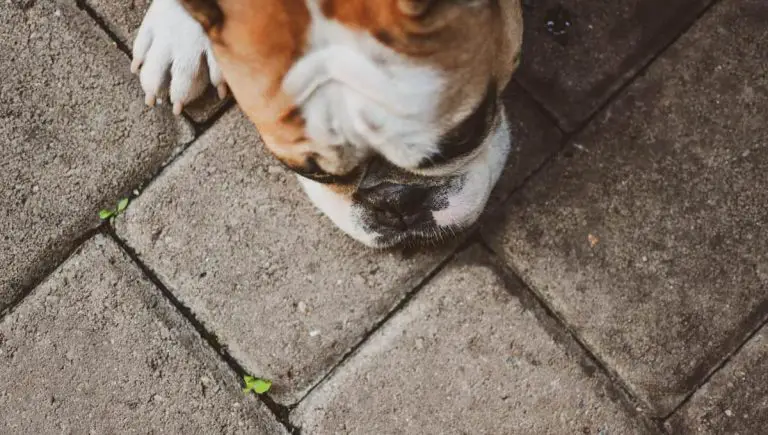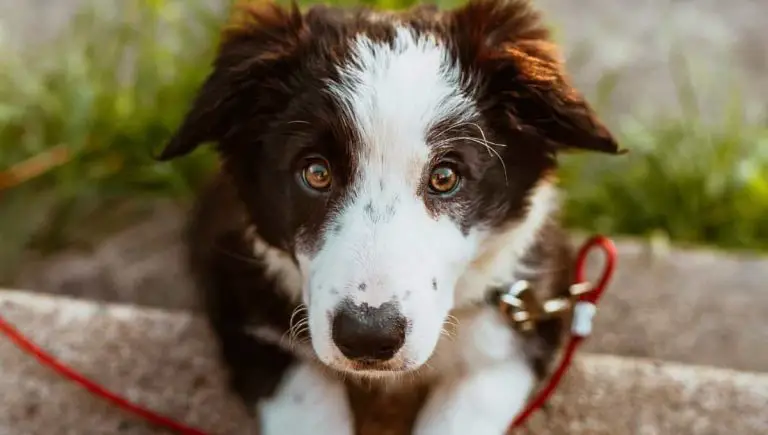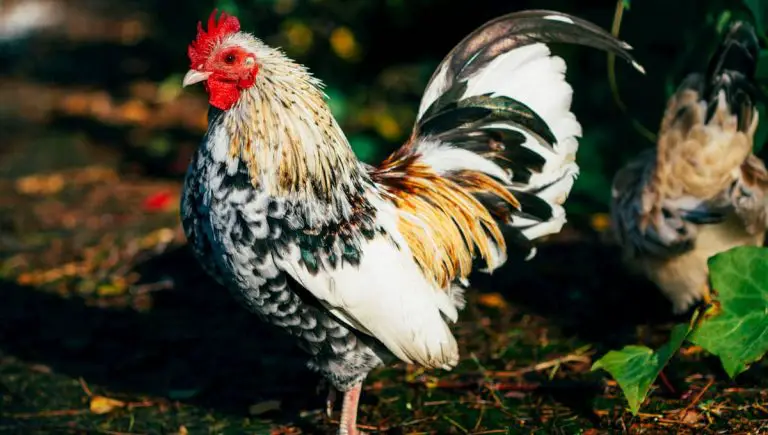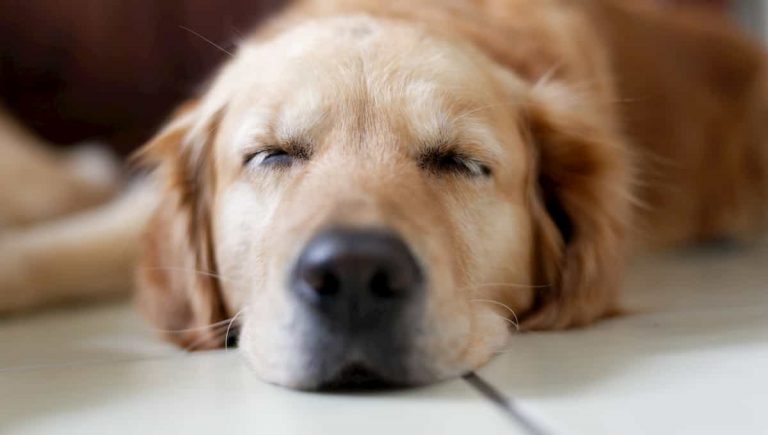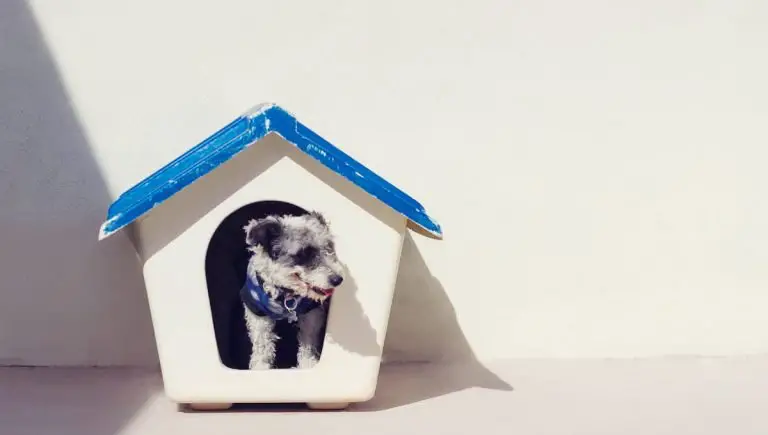How Long Can A Dog Go Without Water?

Our furry, four-legged family members require proper nutrition and adequate water supplies to stay alive, remain healthy, and live longer. So how long can a dog go without water or food and what can you do to prevent your pooch from dehydrating?
You may be asking these questions for several reasons. You’re either going on a long car ride with your pooch, leaving your canine at home while you’re at work for extended periods, or have noticed changes in your dog’s water intake or diet that concern you.
So how long can a dog go without water and food? A dog can survive two to three days without water and three to five days without food. However, these estimates depend upon the age, size, breed, activity levels, and health of your dog.
In this article, we’ll discuss how you can encourage your dog to drink more water, learn the early signs of dehydration (a life-threatening condition), and how to keep your dog happy and healthy overall.
Why Is Water So Important to Dogs?
Like humans, dogs need to drink a certain amount of water per day for their body to function correctly.
Water carries nutrients throughout the body and is required for all forms of metabolic processes, ranging from digestion and brain activity, through to regulating the body temperature, lubricating joints, and cushioning organs.
Dogs will lose water when they urinate, defecate and sweat. For the most part, though, healthy dogs can self-regulate and will know when they need to refuel.
Dehydration occurs when fluids are lost without being adequately replenished, i.e. when your dog is drinking less than usual or isn’t well hydrated.
How Much Should My Dog Be Drinking?
The general rule of thumb is that a dog should be consuming one ounce of water per pound of body weight per day.
However, this may vary where senior dogs drink less because it requires effort and puppies need more for healthy development. Breed, activity levels, and general health will also play a role in your dog’s drinking habits, as we’ve mentioned earlier.
The Drinking Habits Of Dogs Versus Puppies
If you’ve recently adopted a young dog, you may be concerned and wondering “how much water does a puppy need”?
From birth to four months of age, puppies get all the hydration they require from the mother’s milk. However, once the puppy is weaned, he or she must receive ample water, more so than its adult counterpart. Some veterinarians and animal experts advise giving your pet water every hour or two to ensure that it’s well-hydrated.
Monitor your pooches during this critical stage in their lives to ensure they’re drinking enough, or conversely, not over-drinking, which is equally as harmful.
How to Get a Dog to Drink Water?
So what do you do if your dog won’t drink water?
You may have noticed that your hound is drinking less or has always consumed little water. So what are some of the ways to get your dog to drink more water?
A dog not drinking may be a sign of a behavioral issue, a symptom of an underlying health issue, or simply a case of your dog not liking water.
Behavioral
Behavioral issues are caused by changes in a dog’s environment or way of living. Dog’s have an acute sense of smell and will respond negatively to new territories or situations by not eating or drinking. Usually, once your pooch has become more familiar with the new area or circumstance, his or her eating habits will return to normal.
So how long can a dog live without water? If you’re worried about it for this reason, have peace of mind knowing that this unusual behavior is short-lasting.
One way to ease a dog’s discomfort during this unsettling time is to provide them with their usual toys to play with. Or if you’re on a long road trip, ensure that you provide your dog water from home because a dog can pick up even the slightest changes in the composition of their water.
If you’re asking “how long can a dog go without water after surgery?”, it’s likely your dog has undergone a major surgical procedure. You’ve noticed side effects you find worrying – such as zero water intake and a significantly reduced appetite. The surgical procedure counts as a change in your dog’s life. Give your pooch the time to adapt to these new conditions.
Dogs drink when it’s hot to replace the electrolytes they lose. However, like humans, pooches consume less during colder temperatures when they aren’t as active. Don’t be alarmed if this is the case.
Underlying Health Issues Or Injuries
Not drinking could be a symptom of a more severe issue, such as kidney disease or diabetes. If your dog stops drinking suddenly, you should promptly visit your local vet to see if there’s something physiologically wrong.
Dog’s love to play, and sometimes playing fetch with sticks leaves behind wood fragments that cause injury. A dog may refuse to eat or drink if this happens because they don’t want to feel pain. Having a vet dislodge wood or food particles stuck in their teeth may help to relieve a tender mouth.
Fussy Drinkers
Dogs have preferences and might not like the taste of water. Enhance the flavour by adding broth, which they will surely lap up.
Your pooch may not like water, but he or she will surely love something to crunch on. Ice cubes will come in handy as dogs are chewers. Not only will the cubes hydrate your thirsty dog but will keep them feeling refreshed on a warm day.
You can always add wet food to your pooches kibbles if the above methods are ineffective. Wet food contains a high water content which pets need.
Get your dog involved in more exercise if you feel he or she drinks less than the average. A well-exercised hound will be thirsty.
How Do You Know When A Dog Is Dehydrated?
How often should you let your dog drink water to prevent dehydration? We’ve mentioned that dogs usually self-regulate and will know when to hydrate.
That said, illnesses and conditions, such as vomiting, fever, excessive urination, and diarrhoea, can result in the sudden onset of dehydration.
Your dog could die if dehydration is not treated quickly. Therefore, recognizing the symptoms could save your beloved pooches life!
Lethargy
Extreme tiredness is uncharacteristic of an active dog, but without the essential nutrients flowing to its muscles, your dog will lack energy and won’t participate in its usual activities.
Sunken Eyes
Your dog’s eyes may appear sunken because the eye muscles aren’t receiving an adequate supply of water.
Skin That Lacks Elasticity
You can check for dehydration by grabbing the scruff of your dog’s neck. If the skin doesn’t fall back quickly after you release it, your dog’s likely suffering from a water deficiency.
Decreased Appetite
A dehydrated dog won’t be hungry. For the most part, dogs don’t need encouragement to eat. However, if they aren’t interested in food, they might be suffering.
That said, it’s important to note that a decreased appetite isn’t solely caused by dehydration, but may be due to various other factors. We will look at food habits and what influences them later in this article.
How Do You Treat Dehydration In Dogs?
You’re experiencing an early morning rush and only realize once you get to work that you forgot to refill your dog’s bowl from the night before. You ask, “can I leave my dog without water during the day” and “how long is it safe for a dog to go without water?”
While dogs can go without water for two to three days, leaving your dog without anything to drink for extended periods is ill-advised and could result in the poor health of your prized pooch.
Therefore, prevention is the best way to treat canine dehydration.
Place Multiple Bowls of Clean And Clear Water At Strategic Areas Around The Home
Dogs aren’t necessarily clean animals, but they won’t want to drink dirty water. Replace old water daily and wash grime from their bowls regularly.
You can also encourage your dog to drink by positioning these bowls of water in areas of the home that your dog is familiar with, near to their beds or areas of the yard they frequently visit, for example.
The Size And Weight Of The Bowl Matters
Pooches that get overly excited at feeding time tend to upturn their food and water bowls.
Knowing that your dog gets into the habit of spilling water everywhere, you may have concerns about leaving them alone to their devices.
Put aside concerns of “how long can a puppy go without water” when you’re at work or on a short trip by investing in a sturdy, bottom-heavy metal bowl that won’t easily topple over. Otherwise, no-spill water feeders are also popular among animal lovers.
The size of the bowl matters too. Wondering how long a chihuahua can go without water? Not long if you don’t have the right bowl for its stature. Small dogs should be equipped with low and shallow bowls, while medium to large dogs should have a deeper and broader water bowl.
Product Picks
- No mess, no fuss – the UPSKY Dog Bowl Dog Water Bowl is a complete steal for dog owners who can’t always be around to monitor their pets.
Reward Your Dogs With Treats
Your dog may not be drinking water because of a negative association. Try to override this by praising the act with a tasty treat.
You Should Not Give Your Dog Anything Else To Drink
What can dogs drink besides water? The short answer is nothing, because dogs should really only be drinking water to keep hydrated.
On top of the no-go list is milk. While puppies thrive off their mother’s milk, they lose that enzyme as they get older. Fully grown dogs are lactose intolerant, so don’t give your pooch milk in a desperate attempt to get your dog to drink.
Other non-approved dog drinks include tea and coffee as caffeine is highly poisonous to canines, as well as sugary drinks.
How Do I Rehydrate My Dog?
Rush your dog to the veterinarian if your dog is dehydrated where they will administer an intravenous drip to replenish the lost electrolytes and low levels of water circulating the dog’s body.
Can I Give My Dog Gatorade and Other Electrolyte Solutions?
If your dog is showing signs of dehydration, you can give it a small dose of a flavourless rehydrate drink, such as Pedialyte (which is an electrolyte drink used for children).
However, you should first inquire about how much of the drink you should administer with your vet, which may depend on the size of the dog.
If your dog refuses to drink the liquid willingly, use a syringe to insert the rehydrate drink slowly and cautiously, bearing in mind that your dog is sick and uncomfortable.
Products
- Save your pet from dehydration with Pedialyte Electrolyte Solution (unflavored)
How Do You Give A Sick Dog Pills
“How can I get my dog to take medicine if he won’t eat?” – this is a concern numerous pet owners grapple with. A sick dog probably requires medication, which is no mean feat when your canine can’t be easily enticed with morsels of food.
Luckily, there are ways to medicate a dog with no appetite. One true-and-tested method that sometimes renders positive results is by giving a second pet, a healthy pet, a treat. This will spark competition, thereby encouraging your sick animal to eat their snack with the pills hidden inside of it.
How Long Can A Dog Go Without Eating?
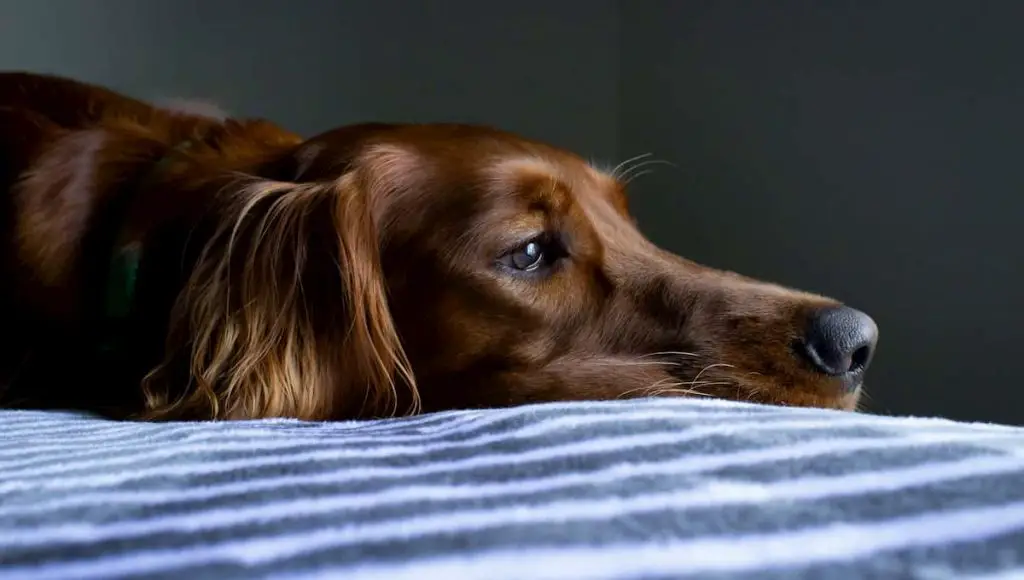
Water may be the life source of a dog, but it’s also a concern when your canine stops eating because dogs are vociferous omnivores who’ll gobble up pretty much anything given to them.
A dog that won’t eat is upsetting but may not necessarily be cause for alarm just yet.
The same with reduced water intake, a dog may stop eating as a result of changes in the environment or pre-existing medical issues, in that a prolonged refusal to eat could be the result of ill-health.
Stress
Are there lots of changes happening around your dog? Dogs love consistency and routine, and so their focus may be on these changes, instead of eating. This begs the question, “can a dog go 24 hours without food?” Yes, in fact you’ll find that a dog does become disinterested in food for short intervals, which is entirely normal.
Can you force-feed a dog to encourage them to return to their usual eating habits? No, this will be more harmful than helpful. A dog will likely return to their routine in one or two weeks after change to their lifestyle occurs. However, you should seek out medical attention if the dog refuses to eat for longer.
Picky Eaters
If you’ve introduced your dog to a wide variety of food and treats, chances are they’ve become picky eaters.
You’ll know if your dog is a picky eater if he gets more excited by new food than the kibble consumed daily.
Remember that this type of behavior is learned. By keeping your dog to a strict diet and by not giving in to those puppy eyes, your dog will likely be a better, more consistent eater.
Routine also plays a part in how and when dogs eat. If you feed your pooches at the same time every day, they will eat better than animals who are unsure about when their next meal is.
Product Picks
- Are you away often and worried that your absence affects your dog’s routine or anxious the food will be eaten in one go? Schedule your pet’s eating from anywhere with the Roffie Automatic Dog Food Dispenser.
Food Quality
Dogs can sense when food has gone bad and won’t eat it. Kibble is susceptible to mould, which we can’t see but dogs can detect.
When your dog suddenly goes off their current food which they’ve never been opposed to before – consider purchasing a fresh batch. If your dog hungrily wolfs down their next meal, you’ll know where the problem lies.
The Age Of The Dog
It’s natural for a dog to eat less as it gets older as senior hounds tend to consume less than young adult dogs and puppies. As older dogs are less active and sleep more, they aren’t as likely to work up a massive appetite.
Therefore, a decreased appetite, unless it’s accompanied by extreme weight loss, lethargy, and an overall disinterest in life, should be considered normal. But how long can an old dog go without eating anything? Taking account of their state of health, less time than a young and healthy dog.
A dog that stops eating altogether is a worrying concern, but is, unfortunately, a fact of life if you own a senior dog nearing the end of its life. Many people ask the question “why do dogs stop eating before they die?”. Hounds on the verge of death have no energy left for food, water, playing, and activities they were previously interested in.
Medical Conditions
If there have been no recent life changes occuring, your dog may be sick or injured. He or she could be afflicted with a variety of conditions, including an upset stomach, allergies, parasite, or be facing life-threatening conditions, such as cancer, diabetes, or organ failure. When this happens, you must urgently seek out vet care.
Dogs will also stop eating or eat considerably less if they’re dehydrated. Therefore, to get your dog back to its regular eating routine, you must try to rehydrate your dog using the solutions mentioned above.
Tips On Taking Your Dog On Holiday With You
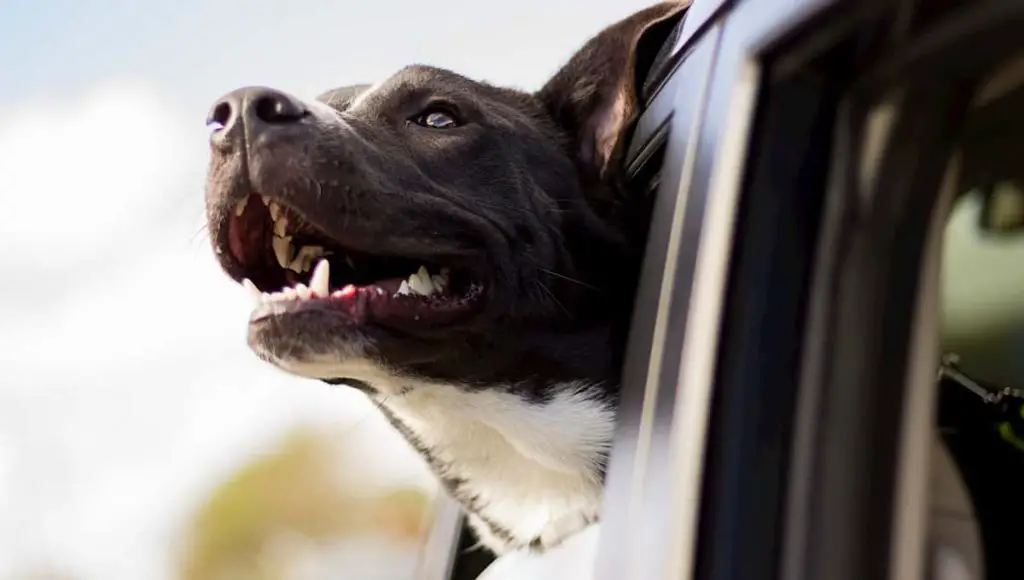
Pet owners across America who consider their dogs an integral part of the family take them along on holiday with them.
However, even if your pooch is used to short car rides, cross country travel isn’t all smooth sailing, and you likely have many questions about when to give them water and feed them, how long can dogs go without peeing while on the move etc.
Unlike cats who nibble throughout the day, most dogs are fine with two meals per day. While on the road, you should stick to a similar routine, bearing in mind that canines are susceptible to motion sickness. Keep the treats to a minimum and only feed your animals when your vehicle’s stopped. This way, you won’t end up with your car smelling like dog puke.
Finding out how much your dog should be drinking isn’t an exact science. Like you, your dog prefers taking occasional sips of water when he or she is thirsty. Leave out water for them to lap up, but don’t fill their bowls to the brim.
Product Picks
- Portable stainless steel food and water bowls for travel.
- Portable dog water bottle for pets on the move to help keep them well hydrated.
Recap: How Long Can A Dog Go Without Drinking And The Real Threat Of Dehydration
Dogs are our loyal companions, who we strive to look after. Unfortunately, we can’t always tell when our loved canines are sick, injured, or dehydrated. In this article, we’ve:
- Described how water is vital for the survival of dogs, like it is with any living being. Dehydration can occur and prove fatal if the amount of water lost isn’t adequately replenished.
- We’ve looked at methods of making water more enticing to picky dogs to avoid the threat of dehydration.
- We’ve identified the principal signs of dehydration, how long a dog can go without water before dehydrating, and how the condition can be cured (namely through prevention).
- We’ve explained the reasons why dogs lose their appetites occasionally, and why it’s not necessarily something to worry about. It’s a concern, however, when the absence of hunger is linked to a medical condition or is a side effect of dehydration.
- Finally, we’ve discussed how your dogs can become not just your companions in life but also on the road as fellow travellers. We’ve provided tips on how to feed and water them on cross state road trips.

